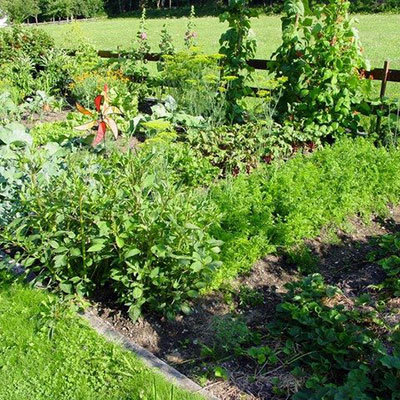
The importance of allotments in the UK often gets overshadowed by financial incentives in that the government has to close the allotment sites so the property can be developed for financial gain. Unfortunately, the current state of allotments is in decline. Freedom of Information has revealed that the government turned down only four (4) applications out of one hundred and ninety-nine (199) to close allotment sites. The decline has been the result of councils across the UK choosing to sell off these land allotments to developers. As time has passed the value of the land on many of these allotments has increased. The irony is that in recent years there has been increasing interest in growing food crops. This renewed focus has a great deal to do with the concerns people have with genetically modified food, as well as the concern about chemical pollution and contamination of food supplies. People want to know where their food comes from and have the confidence that the food is fresh and unaltered. From 1943 to the 1970’s, the allotment numbers decreased sharply from 1,400,000 to about half a million. Though the rate of decline slowed after that, it has continued to this day. It is thought, however, that the increased concerns over the origins of food will create demand for the provision of allotments.
Since Victorian times in the UK, allotments have been a vital part of community life, providing opportunity for members of the communities to grow food that is both organic and very healthy. The allotments have held an important place in the history of the UK, especially by providing food during wartime. The early British notion that each and every citizen is entitled to a piece of land to feed their family is evidenced by the existence of the allotment statutes. These allotments have existed for hundreds of years, with strong roots coming out of the Nineteenth Century. During these times, the labouring poor received these allotments for the provision of growing food. Since there was no welfare state and the country was experiencing rapid industrialisation, these allotments were desperately needed. By 1908 local authorities were required to provide sufficient allotments under the Small Holdings and Allotments Act and as demand necessitated. The Land Settlement Facilities Act of 1919 was intended to assist returning servicemen from the First World War, making land available to all, not just the labouring poor. The Allotments Acts of 1922 strengthened the rights of allotment holders. Then in 1925 the Allotments Act established statutory allotments. Under this Act, local authorities were not permitted to sell off or convert allotments without the express Ministerial consent. This was known as Section 8 Orders.
Most allotment sites are owned by the local authorities, including the parish or town councils. Some allotments are self-managed and owned by the allotment holders via an association. There are even allotments that are owned by the Church of England. These allotment sites may be termed either statutory or temporary. The first type, statutory, is land with the freehold or extremely long lease, which is vested in the allotments authority. The statutory allotments sites could have originally been purchased for the purpose of allotments, or it could have been appropriated later for allotment use. Temporary allotment sites are generally destined for some other use, but it is land that is either rented by or owned by an allotments authority.
Allotment holders are typically required to pay rent since allotments are leased from landlords. This is important because the rent is used to pay for the general maintenance bills and water rates. The rental amount generally resides in the range from £25 to £125 per year per plot holder. General terminology as opposed to specific amounts for rent collection sites that rent should be a "reasonable amount" the "tenant would expect to pay". Signing a tenancy agreement is an obligation of all allotment holders, and hence the local allotment societies these holders form. The tenancy agreements outline the expectations the landlords have of the allotment holders. This includes the rent that is due, the building of sheds, the activities that allotment holders are permitted to conduct, the general behaviour of allotment holders, and even subletting issues.
Since the trend of late has been towards people wishing to grow their own food, the number of gardeners on a waiting list for an allotment is estimated to be more than 90,000. Unfortunately, very few sites are being created each year despite the fact the local authorities have a statutory obligation to provide allotments upon demand. The desire for more space to be utilised for locally grown food may also be on an increase due to the economic uncertainty on a global scale. Many people tend to turn back to the land during times of recession as a way to reconnect with something tangible and as a way to decrease food costs. Many people are calling on the government to provide more protection to allotment sites across the UK; they believe that the criteria the government uses to deregulate allotments should be tightened in favour of better protection of allotments. These historically significant UK allotments provide the highly needed access to community gardening and essential green space in highly developed areas.




